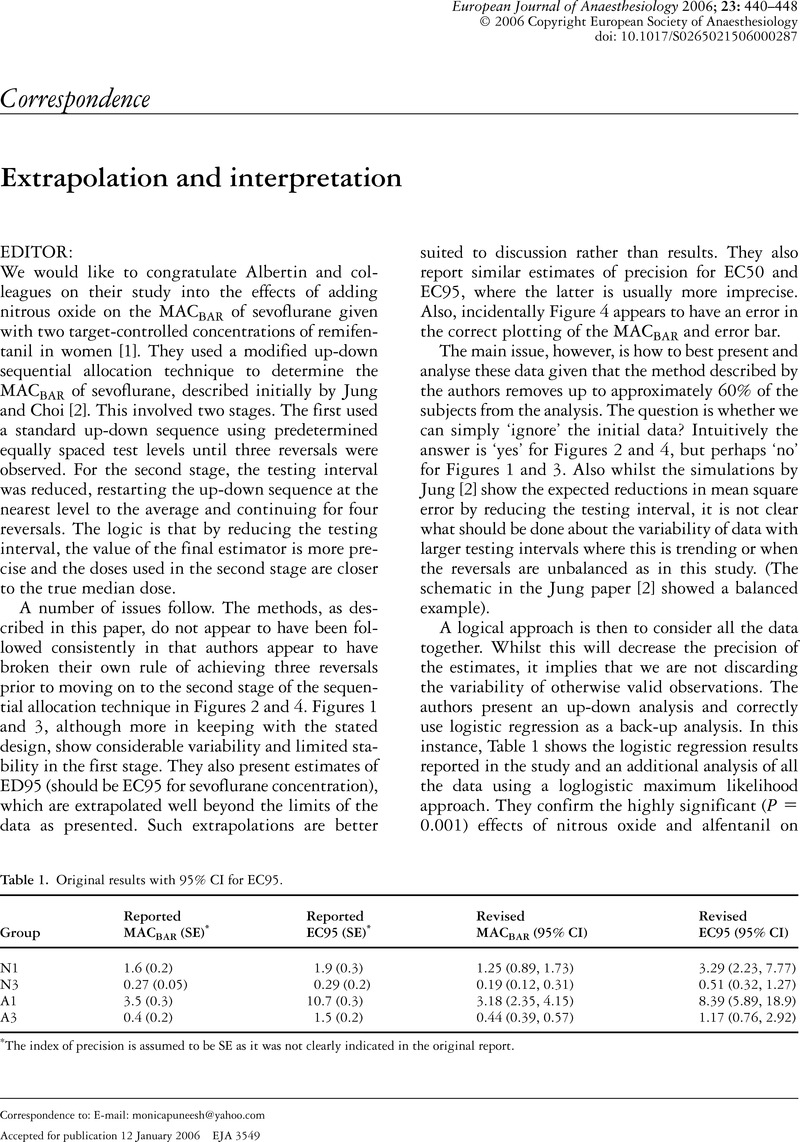No CrossRef data available.
Article contents
Concerns with complementary and alternative medicines
Published online by Cambridge University Press: 30 March 2006
Abstract
An abstract is not available for this content so a preview has been provided. Please use the Get access link above for information on how to access this content.

- Type
- Correspondence
- Information
- Copyright
- 2006 European Society of Anaesthesiology
References
McKenzie AG, Simpson KR. Current management of patients taking herbal medicines: a survey of anaesthetic practice in the UK. Eur J Anaesthesiol 2005; 22: 597–602.Google Scholar
Richardson MA, Sanders T, Palmer JLet al. Complementary/alternative medicine use in a comprehensive cancer center and the implications for oncologists. J Clin Oncol 2000; 18: 2505–2514.Google Scholar
Vapiwala N. Initiation of complementary and alternative medical therapies (CAM) by cancer patients during radiation therapy.ASTRO, 2005; abstract: http://www.astro.org/media_center/news_releases/2005/101605 hide.htm
Alexander JA. The potential hazards of perioperative herb and dietary supplement use. ASA Annual Meeting Refresher Course Lectures 2005; 145: 1–7.Google Scholar
Molassiotis A, Fernadez-Ortega P, Pud Det al. Use of complementary and alternative medicine in cancer patients: an European survey. Ann Oncol 2005; 16 (4): 655–663.Google Scholar
Ernst E. Sourcing the facts on alternative medicines. Hosp Doctor 2005; November 24: 24.Google Scholar


